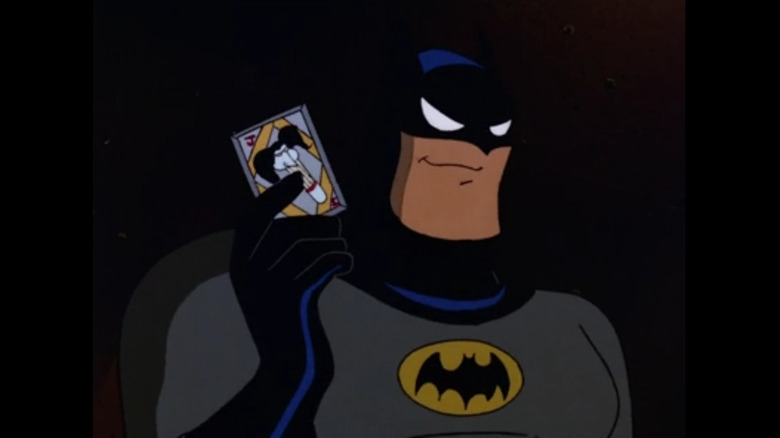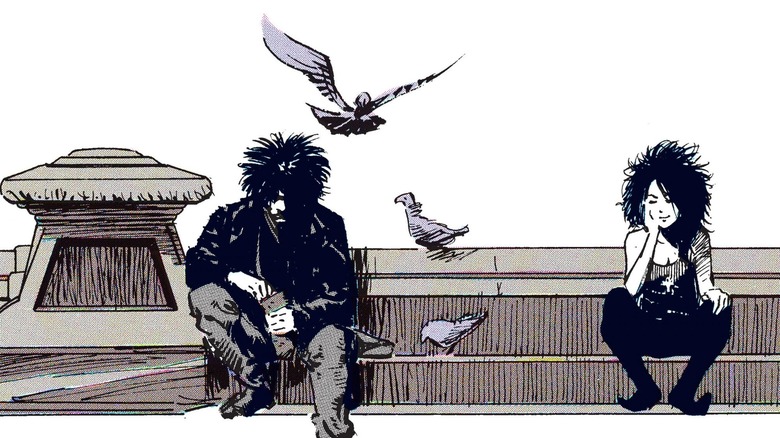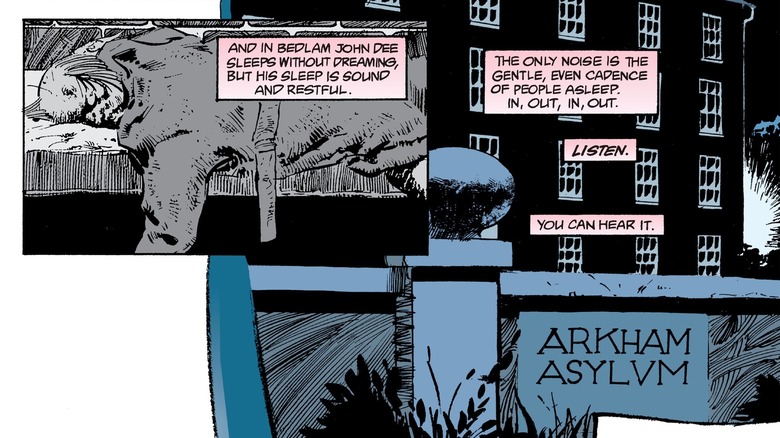Neil Gaiman's Sandman Could Have Been A Part Of Batman: The Animated Series
We may receive a commission on purchases made from links.
Long before "The Sandman" was adapted into a Netflix show, the Sandman himself almost popped into an episode of "Batman: The Animated Series." As screenwriter for the show, Paul Dini, wrote in his autobiographical graphic novel "Dark Night: A True Batman Story," he had an idea for an episode where a near-fatally injured Batman finds himself in the dream realm where the Sandman (otherwise known as Morpheus, or as Dream) resides.
While Batman's in the Dreaming he comes across Dream's sister Death. Here, she'd take the form of a young girl who cheerfully refers to Batman as "the Cheater." She's about to take Batman into the land of the dead before Morpheus comes in and stops her. As Dini explained:
"That's when Morpheus, the Sandman, appears. He tells his sister that Batman is his guest in his realm, and he asks Death to spare him for now. Death's not happy, but family is family, so she hangs back while Morpheus tells Batman he is responsible for more dreams than he knows."
The rest of the episode would take on a similar format to "A Christmas Carol," where Morpheus gives Batman a tour of his realm, showing how his image "haunts the dreams of the wicked," and "instilled dreams of hope in the people he's saved." Then Morpheus gives Batman the choice to choose to die peacefully or to continue living. Spoiler alert: Batman picks life.
Why it didn't come to be
It's easy to see the appeal of a crossover between these two properties. The Sandman series is also owned by DC Comics, and the early issues especially had a very gothic, moody feel that fits in well with Gotham's vibes. An interaction between Batman and Death in particular would be fascinating because one of Batman's most famous character traits is his unwillingness to kill, even when it would probably be best for the greater good. Not to mention, of course, Death could probably help give him some closure over his parents' situation.
But in the end, the introduction of these characters into a one-off episode was considered too ambitious. As Paul Dini put it in the recollection of his own pitch, "It seems that Death and the Sandman are siblings in a sort of dysfunctional family of states of human consciousness. That part's complicated, a little too much for just 22 minutes."
To an audience of mostly children who have no idea who these new characters are, it'd be hard to properly explain all this while still making a compelling Batman episode that stands on its own. Even though Neil Gaiman himself seemed excited about the idea when Dini shared it with him, the producers still passed on the episode concept, telling Dini, "It was good for you to pitch it. But it's just not for us right now."
At least we have the early Sandman issues
Although Neil Gaiman's Sandman never popped up in Batman's TV show, at least Batman (sort of) got a shout-out in the Sandman comics. Before the Sandman series truly grew into its own thing in the early '90s, it was originally sold as another superhero comic series, so its first two volumes (and first handful of issues especially) were filled with references to other DC heroes. Or rather, the DC villains.
Batman himself doesn't show up, but Morpheus stops by Arkham Asylum a few times to deal with a troublesome patient imprisoned there. The patient in question is John Dee, or Doctor Destiny, a recurring "Justice League" villain. The first volume ("Preludes and Nocturnes") also gives us a quick glimpse of Jonathan Crane, otherwise known as the Scarecrow. The Joker is mentioned as well, although the famous clown never shows up on the page.
None of this is featured in the Netflix series though and for good reason. The showrunners knew that the Sandman comics were at their best after they became their own separate thing; not to mention, including all the references to Batman villains early on would give newbie viewers a false impression of what the show would be about.
So at least at this point in time, bringing Batman and Morpheus on screen together in any capacity would be a bad idea. But for anyone who still wants to see the two characters' worlds collide, even if only to a small degree, you've always got "Preludes and Nocturnes" to hold onto.


